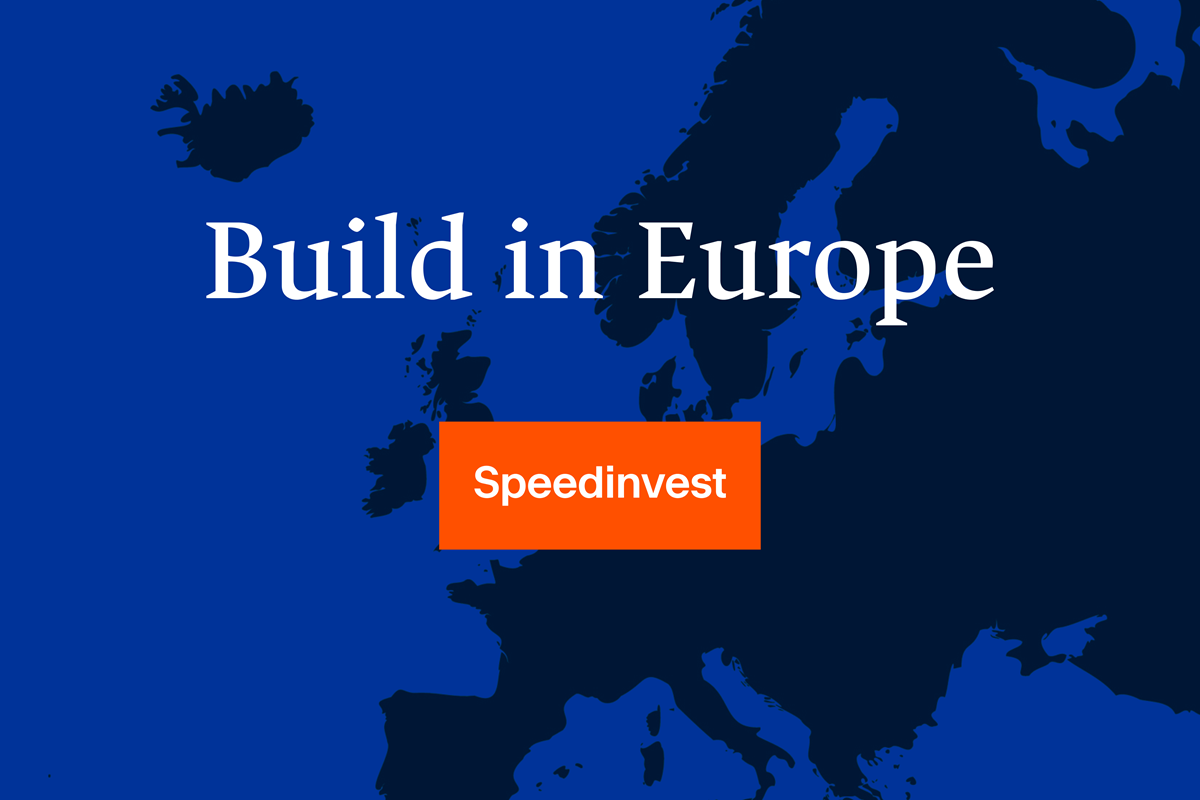Germany’s corporations spent over €90 billion on R&D last year, yet most of that innovation never left the building. While global competitors fast-track AI and startup deals, German firms still keep almost 90% of their R&D spending in-house.
Germany's innovation gap isn't a deficit of money; it’s how they spend it. That’s according to a new report authored by Speedinvest in collaboration with Bits & Pretzels, the largest German annual conference for European founders, investors, and decision-makers.
To stay competitive, German firms must foster external R&D and embrace open innovation models like Corporate Venture Capital (CVC), tech M&A, and Venture Clienting.
Drawing on insights gathered from interviews with numerous corporations such as Bosch, Stihl, DHL, alongside Verena Pausder, Chairwoman of the German Startup Association; Thomas Jarzombek, Parliamentary State Secretary for Digital and State Modernization; and Dr. Christian Rammer, Head of Economic Innovation and Business Dynamics at ZEW, the report offers a clear look at where Europe, and particularly, Germany stands in the global innovation race and path forward.
As our report highlights, unlocking long-term growth and higher profits increasingly depends on directing more R&D spend toward partnerships with innovative startups. This shift away from a “DIY” mindset taps into the speed, creativity, and transformative potential of external collaboration, a vital step for Germany to stay competitive in a global market shaped by AI and open innovation.
Read the key findings and download the full report below.
.jpg)
Germany's Hidden Paradox: Big Spenders, Closed Doors
German companies still wear the crown for internal R&D in Europe, and for good reason. Businesses poured over €90 billion into their labs in 2024 alone – more than double the figure from 2007 – and this trend is expected to continue growing by approximately 3.5% each year, even after adjusting for inflation.
That's a serious amount of money.
But here’s the catch: more than 85% of that money never leaves the company. Germany's biggest R&D players – like Volkswagen, Mercedes-Benz, and Bosch – keep around 90% of their R&D budgets locked into internal projects. Compare that to their U.S. counterparts, the largest R&D spenders – Alphabet, Amazon, and Meta – who channel approximately 30% of their innovation spending into outside ventures, including snapping up promising startups.

This difference isn't solely about numbers; it reflects a stark cultural contrast, especially when you look at mergers and acquisitions. In the U.S., it's common for companies to buy others to quickly adopt new technologies, business models, or capabilities on a grand scale. Between 2018 and 2023, annual M&A activity in the U.S. averaged around 5.3% of GDP (approximately €1.15 trillion per year) – nearly double Germany’s 2.9% (around €110 billion).
Companies that consistently invest in new ventures through their corporate venture capital arms, taking minority stakes in startups to gain access to external innovation, new markets, and strategic insights – don’t just gain knowledge, they gain value. Our statistical analysis shows: each year of sustained CVC activity boosts a DAX40 firm's valuation multiples substantially.
In the U.S., S&P 500 companies with 25+ CVC deals since 2016 grew sales at a 7.25% compound annual growth rate, outperforming their peers with no CVC activity (6.26%). CVC-backed startups also exited at significantly higher EBITDA multiples at a median of 24.1× EBITDA, far exceeding the 16.9× multiple of non-CVC ventures, and faced half the bankruptcy rate.
As Verena Pausder, Chairwoman of the German Startups Association, puts it:
“In the U.S., startup investment and acquisitions are a core part of innovation strategy. You buy technology and market share before someone else does. Fast, strategic, confident. In Germany, there’s often hesitation. Instead of seizing the opportunity, we analyze. We check and debate whether a scale-up 'fits the strategy.' By the time the discussion ends, the startup has already been acquired by a U.S. company.
If Europe truly wants tech sovereignty, in the form of control over its technological future, then the continent’s largest economy is a good place to start shaking things up. That means fewer roadblocks, bolder decisions, and smart incentives to keep capital and brilliant ideas right here at home. There are undoubtedly also policy reasons, as detailed below, as to why German corporations are considerably more reserved than their U.S. counterparts when it comes to acquiring innovative companies.
Thomas Jarzombek, Parliamentary State Secretary for Digital Transformation and Government Modernization knows one of these key issues, which is that:
“What we call the ‘cost of failure’ – meaning the restructuring costs that arise when a venture fails, for example, due to labour law requirements.”
Corporate Venturing as a Catalyst for Innovation
German R&D powerhouses aren't short on money. What they often lack is a reliable way to pull external breakthroughs into their core business. The report highlights effective corporate venturing strategies to bridge this crucial execution gap – with a focus on enabling external R&D.
Venture Building means launching a startup inside the corporation, powered by internal capital, talent, and data. Though only 23% of Forbes 2000 companies pursue it, when executed well, it delivers ventures tightly aligned with corporate strategy. Success hinges on four factors: a clear strategic goal, executive buy-in, ringfenced funding, and incentives that mimic real startups. Miss one, and momentum stalls.
Corporate Venture Capital (CVC) involves minority investments in external startups, either directly through in-house venture arms or indirectly via independent VC funds. It has gone mainstream: the number of active corporate investors grew from 500 in 2013 to over 2,300 in 2024. Corporates invest for strategic insights (47%), a mix of goals (38%), or financial return (15%). But money isn’t enough – CVC demands long-term capital, startup speed, and strategic clarity. Among corporations we surveyed, 64% hold LP stakes in three to four VC funds on average.
Venture Clienting is increasingly seen as the fastest, most efficient way to turn startup innovation into business impact. Instead of investing, the corporation becomes an early customer, paying startups to solve real problems. With a structured six-step approach, pilots can go live within a quarter. It delivers startups early revenue and validation, and gives corporations de-risked access to cutting-edge solutions – no equity, no red tape, just results. Interestingly, across the interviews conducted for this report, 92% of corporations described venture clienting as one of the most effective tools for accessing external innovation, with over 80% also highlighting CVC investments as impactful.
Dr. Christian Rammer, Head of the Research Group Economics of Innovation and Business Dynamics at ZEW, comments:
“In highly dynamic fields where numerous new technological approaches are being explored – such as is currently the case with AI, and previously with biotechnology – it is strategically sound for established companies to closely monitor the startup ecosystem and maintain active dialogue with a broad range of startups. This enables them to identify and respond to emerging developments at an early stage.
The most successful innovators often use several playbooks. They might start by piloting solutions through venture clienting, invest through CVC once they build conviction, and only build internally when the innovation is inseparable from their own unique assets. The true secret to success across these models boils down to dedicated funding, clear autonomy, hard KPIs, and unwavering support and long-term commitment from leadership.
A Call to Pragmatic Action
What practical steps can German corporations embrace to build a more open and dynamic approach to innovation?
- Start outside-in: Dedicate more than 20% of innovation budgets to corporate venturing: CVC, Corporate Venture Building, Venture Clienting, and Tech M&A.
- Pick projects wisely: Begin with clienting to test the waters, invest strategically through CVC or venture capital firm when conviction builds, and only build new ventures internally when truly necessary.
- Measure what matters: Focus on pilots that directly impact profit & loss statements, not just press releases that mention AI.
- Reward speed: Empower CVC and venture clienting teams by giving them the autonomy to scout, decide, and close deals within weeks, not quarters.
Germany’s edge in engineering is world-class. But to lead in tomorrow’s economy, that expertise must connect with the agility and ambition of startups. It’s not about spending more, it’s about spending smarter, and more openly.
It’s time for German industry to turn €90 billion in R&D into real-world breakthroughs and to confidently redirect a meaningful slice of its R&D billions beyond the factory gate, unleashing new potential for the economic future.







